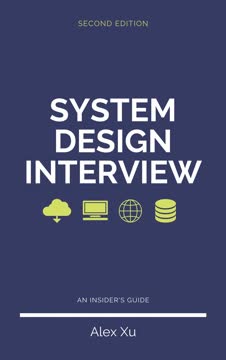つの重要なポイント
1. Dockerはアプリケーションのデプロイとスケーリングを革新する
Dockerは、過去10年間で最も有効な技術の中心に位置しています。
デプロイの簡素化。 Dockerは、開発者がアプリケーションとそのすべての依存関係をコンテナと呼ばれる標準化された単位にパッケージ化することを可能にします。このアプローチはデプロイプロセスを劇的に簡素化し、異なる環境間での一貫性を確保します。
スケーラビリティの向上。 基盤となるインフラストラクチャを抽象化することで、Dockerはアプリケーションを水平に簡単にスケールすることを可能にします。需要に応じてコンテナを迅速に起動または停止でき、リソースの効率的な利用が可能になります。
DevOpsの促進。 Dockerは、開発チームと運用チームの間のギャップを埋める共通の言語とツールセットを提供します。これにより、アプリケーションライフサイクル全体でのコラボレーションとワークフローがスムーズになります。
2. コンテナは軽量でポータブルかつ効率的な仮想化を提供する
コンテナは、すべてのコンテナが単一のカーネルを共有し、その単一のカーネル内で完全に分離が実装されるという根本的に異なるアプローチです。
リソース効率。 コンテナはホストシステムのカーネルを共有するため、従来の仮想マシンよりもはるかに軽量です。これにより、単一のホスト上でのアプリケーションの高密度化と迅速な起動が可能になります。
ポータビリティ。 Dockerコンテナはアプリケーションとその依存関係をカプセル化し、異なる環境間での一貫した動作を保証します。この「一度ビルドしてどこでも実行」アプローチは、開発とデプロイのワークフローを簡素化します。
分離。 仮想マシンと同じレベルの分離を提供するわけではありませんが、コンテナはほとんどのユースケースに対して十分な分離を提供します。Linuxカーネルの機能である名前空間やcgroupsを利用して、アプリケーションのための分離された環境を作成します。
3. Dockerのアーキテクチャ: クライアント、サーバー、レジストリ
Dockerは少なくとも2つの部分から成り立っています: クライアントとサーバー/デーモン(図2-3参照)。オプションで、Dockerイメージとそのメタデータを保存するレジストリという第3のコンポーネントがあります。
クライアント-サーバーモデル。 Dockerはクライアント-サーバーアーキテクチャを使用し、DockerクライアントがDockerデーモンと通信し、コンテナのビルド、実行、配布を処理します。
Dockerレジストリ。 レジストリはDockerイメージを保存し配布するための集中型リポジトリです。Docker HubはDockerが管理する公開レジストリですが、組織はプライベートレジストリを設定することもできます。
コンポーネントの相互作用:
- Dockerクライアント: Dockerデーモンにコマンドを送信
- Dockerデーモン: Dockerオブジェクト(イメージ、コンテナ、ネットワーク、ボリューム)を管理
- Dockerレジストリ: Dockerイメージを保存
4. Dockerイメージとコンテナの構築と管理
コンテナは通常使い捨てとして設計されていますが、標準的なテストではすべての問題を回避できないことがあり、実行中のコンテナをデバッグするためのツールが必要になることがあります。
イメージの作成。 DockerイメージはDockerfileを使用してビルドされ、イメージを作成するための一連の指示が含まれています。各指示は新しいレイヤーを作成し、効率的なストレージとイメージの転送を可能にします。
コンテナのライフサイクル:
- 作成:
docker create - 開始:
docker start - 実行:
docker run(作成と開始を組み合わせる) - 停止:
docker stop - 削除:
docker rm
デバッグツール:
docker logs: コンテナのログを表示docker exec: 実行中のコンテナ内でコマンドを実行docker inspect: Dockerオブジェクトの詳細情報を取得
5. Docker環境におけるネットワークとストレージ
Dockerは未使用のRFC 1918プライベートサブネットブロックからプライベートサブネットを割り当てます。起動時に未使用のネットワークブロックを検出し、仮想ネットワークに割り当てます。
ネットワーキングモデル:
- ブリッジ: デフォルトのネットワークドライバーで、コンテナ用のプライベートネットワークを作成
- ホスト: ネットワークの分離を解除し、ホストのネットワークを直接使用
- オーバーレイ: 複数のDockerホスト間でのコンテナ間通信を可能にする
- Macvlan: コンテナにMACアドレスを割り当て、ネットワーク上で物理デバイスとして表示
ストレージオプション:
- ボリューム: 永続データのための推奨メカニズムで、Dockerによって管理
- バインドマウント: ホストのファイルまたはディレクトリをコンテナにマップ
- tmpfsマウント: ホストのメモリに一時的にデータを保存
6. Dockerコンテナのデバッグと監視
上記のようにコンテナを停止したいときもありますが、コンテナにしばらく何もさせたくないときもあります。
デバッグ技術:
docker logs: コンテナの出力を表示docker exec: 実行中のコンテナ内でコマンドを実行docker inspect: コンテナの詳細情報を取得docker stats: コンテナのリソース使用状況をリアルタイムで監視
監視ツール:
- cAdvisor: リソース使用量とパフォーマンスデータを提供
- Prometheus: コンテナからメトリクスを収集し保存
- Grafana: コンテナのメトリクスを視覚化しダッシュボードを作成
7. オーケストレーションツールでDockerをスケーリング
おそらくこの分野で最初に公開されたツールはCoreOSのFleetで、ホスト上のsystemdと連携して分散型initシステムとして機能します。
オーケストレーションプラットフォーム:
- Docker Swarm: Dockerのネイティブクラスタリング
- Kubernetes: オープンソースのコンテナオーケストレーションプラットフォーム
- Apache Mesos: Dockerコンテナを実行できる分散システムカーネル
主な機能:
- サービスディスカバリー
- ロードバランシング
- スケーリング
- ローリングアップデート
- 自己修復
8. Dockerデプロイメントのセキュリティ考慮事項
特権を持って実行されるデーモンであり、アプリケーションを直接制御するため、Dockerをインターネットに直接公開するのは良い考えではありません。
セキュリティのベストプラクティス:
- 非rootユーザーとしてコンテナを実行
- 攻撃面を減らすために最小限のベースイメージを使用
- ネットワークセグメンテーションを実装
- Dockerとコンテナイメージを定期的に更新およびパッチ適用
- Docker Content Trustを使用してイメージの署名と検証
セキュリティツール:
- AppArmor/SELinux: 強制アクセス制御システム
- Docker Bench Security: 自動セキュリティ評価ツール
- Clair: コンテナのためのオープンソース脆弱性スキャナー
9. 本番環境対応のDockerプラットフォームの設計
単にDockerを環境にデプロイするのではなく、Dockerの上にうまく設計されたコンテナプラットフォームを構築する時間をかければ、Dockerベースのワークフローの多くの利点を享受しつつ、通常このような高速度プロジェクトに存在する鋭い露出エッジから自分を守ることができます。
重要な考慮事項:
- 高可用性とフォールトトレランス
- スケーラビリティとパフォーマンス
- 監視とログ記録
- バックアップと災害復旧
- 継続的インテグレーションとデプロイメント(CI/CD)
ベストプラクティス:
- 大規模デプロイメントの管理にはオーケストレーションツールを使用
- 適切なログ記録と監視ソリューションを実装
- コンテナビルドとデプロイメントのための堅牢なCI/CDパイプラインを開発
- Dockerインフラストラクチャを定期的にテストし更新
10. コンテナ化されたアプリケーションのためのTwelve-Factor Appメソッド
必須ではありませんが、これら12のステップを念頭に置いて構築されたアプリケーションは、Dockerワークフローに理想的な候補です。
主要な原則:
- コードベース: リビジョン管理で追跡された1つのコードベース、多くのデプロイ
- 依存関係: 明示的に宣言し、依存関係を分離
- 設定: 環境に設定を保存
- バッキングサービス: バッキングサービスをアタッチされたリソースとして扱う
- ビルド、リリース、実行: ビルドと実行ステージを厳密に分離
- プロセス: アプリを1つ以上のステートレスプロセスとして実行
- ポートバインディング: ポートバインディングを介してサービスをエクスポート
- 並行性: プロセスモデルを介してスケールアウト
- 使い捨て性: 高速な起動と優雅なシャットダウンで堅牢性を最大化
- 開発/本番のパリティ: 開発、ステージング、本番をできるだけ似せる
- ログ: ログをイベントストリームとして扱う
- 管理プロセス: 管理/管理タスクを一度限りのプロセスとして実行
Dockerアプリケーションの利点:
- スケーラビリティと保守性の向上
- デプロイと運用の容易化
- クラウドネイティブアーキテクチャとのより良い整合性
最終更新日:
FAQ
What’s "Docker: Up & Running" by Karl Matthias about?
- Comprehensive Docker introduction: The book offers a thorough overview of Docker and Linux containers, explaining what Docker is, how it works, and its role in modern software delivery.
- Production-focused guidance: It walks readers from installation to deploying and managing containers at scale, emphasizing production readiness, orchestration, and security.
- Practical experience shared: The authors draw on real-world experience running Docker in production at New Relic, providing actionable advice and lessons learned.
- Audience and approach: Targeted at developers, operations engineers, and architects, the book balances technical depth with practical workflow improvements and organizational benefits.
Why should I read "Docker: Up & Running" by Karl Matthias?
- Real-world expertise: The authors share insights from building and operating Docker platforms in production, going beyond official documentation to address practical challenges.
- Covers full Docker lifecycle: Readers learn about installation, image building, container management, deployment, scaling, and advanced topics, gaining a holistic understanding of Docker.
- Actionable best practices: The book helps readers avoid common pitfalls, improve workflows, and leverage Docker’s strengths for faster, more reliable software delivery.
- Advanced topics included: It explores orchestration, security, and platform design, making it valuable for both beginners and experienced users.
What are the key takeaways from "Docker: Up & Running" by Karl Matthias?
- Docker’s transformative impact: Docker standardizes application packaging and deployment, reducing complexity and improving collaboration between development and operations.
- Production readiness is essential: The book emphasizes best practices for deploying, securing, and managing containers in real-world environments.
- Workflow improvements: Readers learn how Docker streamlines development, testing, and deployment pipelines, supporting modern DevOps practices.
- Scalability and resilience: The book covers orchestration tools and design principles for building scalable, maintainable, and secure container platforms.
What are the main concepts and benefits of Docker explained in "Docker: Up & Running"?
- Containers vs. virtual machines: Docker containers are lightweight, sharing the host OS kernel, which makes them faster and more resource-efficient than traditional VMs.
- Immutable infrastructure: Docker encourages stateless, throwaway containers, reducing configuration drift and deployment errors.
- Portability and consistency: Docker images bundle applications and dependencies, ensuring consistent environments across development, testing, and production.
- Simplified workflows: Standardized containers reduce “works on my machine” issues and streamline deployment pipelines.
How does "Docker: Up & Running" by Karl Matthias explain Docker’s architecture and core components?
- Client-server model: Docker consists of a client and a server (daemon), with the client sending commands to the daemon to manage containers.
- Docker registry: Registries (public or private) store Docker images and metadata, enabling image distribution and sharing.
- Networking and storage: Docker uses Linux kernel features like namespaces, cgroups, and virtual networking to isolate containers and manage resources.
- Layered filesystems: Storage backends like AUFS and overlayfs enable efficient image layering and management.
How are Docker images built and managed according to "Docker: Up & Running"?
- Layered image construction: Docker images are built from stacked filesystem layers, each representing a build step, enabling efficient reuse and caching.
- Dockerfile usage: Images are defined using Dockerfiles, specifying base images, commands, file additions, environment variables, and default commands.
- Building and tagging: The
docker buildcommand creates images, which are tagged for versioning and stored in registries for sharing and deployment. - Efficient updates: Only changed layers need to be rebuilt or transferred, optimizing build and deployment times.
How do Docker containers work and what are their key features in "Docker: Up & Running"?
- Isolated processes: Containers are lightweight wrappers around processes, isolated via namespaces and cgroups but sharing the host kernel.
- Ephemeral by design: Containers can be quickly created, started, stopped, paused, and destroyed, supporting rapid scaling and updates.
- Configurable resources: Containers can be assigned names, labels, resource limits, and mounted volumes for persistent storage.
- Stateless best practice: The book recommends designing containers to be stateless, with persistent data externalized for scalability and reliability.
What is the recommended Docker workflow in "Docker: Up & Running" by Karl Matthias?
- Revision control and image building: Start with a single codebase in version control and build Docker images that encapsulate all dependencies.
- Testing and packaging: Test the exact image that will run in production, using tools like Docker Compose for external dependencies.
- Deployment and scaling: Deploy images consistently across servers, progressing from manual commands to orchestration tools as scale increases.
- Automation integration: The workflow integrates with CI systems, automating builds, tests, and deployments for efficiency and reliability.
How does "Docker: Up & Running" by Karl Matthias address deploying and orchestrating containers in production?
- Shipping container metaphor: Docker containers provide a standardized interface, simplifying deployment and reducing errors.
- Deployment progression: Teams evolve from local builds to orchestrated, multi-server deployments, improving process fluidity and reliability.
- Orchestration tools: The book covers tools like Swarm, Centurion, Helios, Kubernetes, and Mesos for managing container fleets and scaling applications.
- Start simple, scale up: It advises beginning with basic tools and moving to more complex orchestration as organizational needs grow.
What are the best practices for testing and debugging Docker containers in "Docker: Up & Running"?
- Test production images: Always test the exact image intended for production, using environment variables or arguments to switch behavior for testing.
- Automate testing: Integrate builds and tests with CI systems, running test suites inside containers and tagging successful builds for deployment.
- Debugging tools: Use
docker top,ps,strace, andlsofto inspect container processes, anddocker difffor filesystem changes. - Network and log inspection: Understand Docker’s network namespaces and proxy, and use logging drivers and external aggregation tools for monitoring.
How does "Docker: Up & Running" by Karl Matthias address Docker security and isolation?
- Kernel sharing risks: Containers share the host kernel, so isolation is weaker than with VMs; root inside a container is root on the host.
- Least privilege principle: Run containers as non-root users and avoid using
--privilegedunless absolutely necessary. - Selective capabilities: Add only required kernel capabilities to containers, minimizing potential attack surfaces.
- Mandatory Access Control: Use SELinux or AppArmor profiles to enforce security policies and restrict container access to sensitive host resources.
What application and platform design principles does "Docker: Up & Running" by Karl Matthias recommend?
- Twelve-Factor App alignment: Emphasizes single codebase, explicit dependencies, environment-based configuration, stateless processes, and attached backing services for portability and scalability.
- Reactive Manifesto principles: Encourages building applications that are responsive, resilient, elastic, and message-driven, leveraging Docker’s dynamic container model.
- Production platform design: Recommends fast startup/shutdown, concurrency, logging to stdout, and one-off admin tasks for robust container platforms.
- Development/production parity: Stresses minimizing environment divergence to reduce risk and ensure reliable deployments.
レビュー
『Docker: Up and Running』は、平均評価が3.77/5で賛否両論の評価を受けている。本書はDockerの基本と高度なトピック、特にセキュリティとデバッグに関する明確な説明が読者に評価されている。多くの人が初心者にとって良い入門書と感じているが、一部の人は内容が古いことや、Dockerの広範なエコシステムについてのカバーが不足していると批判している。簡潔な文章と実践的な例が称賛される一方で、Docker Composeのようなトピックに触れていないことが批判されている。ある読者は内容が基本的すぎると考える一方で、他の読者はDockerの核心概念を理解するための貴重なリソースと見なしている。
Similar Books













